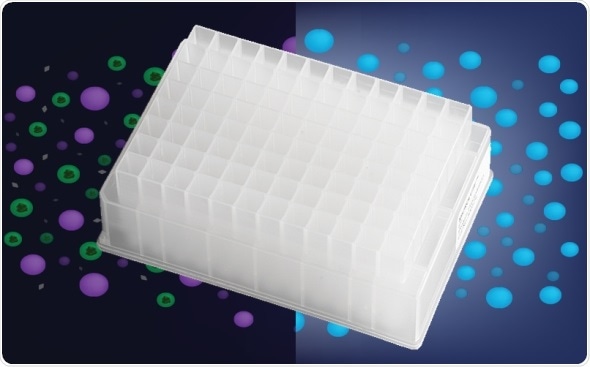The Protein Crash technique used by the Porvair Sciences P3 microplate is highly effective at removing proteins from biological samples prior to analysis.

The P3 microplate works by denaturing the protein upon addition of solvents such as acetonitrile or methanol. The proteins “crash” or precipitate out of solution to forms large sticky globules that are then trapped on an open-pore structure filter. Underneath this filter is a highly hydrophobic filter which retains all liquids above it. When a vacuum is applied to the P3 microplate, the liquid containing the analytes of interest is efficiently drawn through the filter and into a collection plate below leaving behind unwanted proteins that can interfere with downstream applications.
The novel dual filter technology in the P3 microplate not only retains unwanted proteins and has good flow rates, it ensure no leakage occurs prior to collection by vacuum. Designed and precision manufactured to conform with ANSI/SLAS guidelines - the automation-friendly P3 microplate enables 96 samples to be filtered simultaneously – accelerating your biological sample clean-up prior to analysis.
The P3 microplate is manufactured from specially selected polypropylene to ensure very low extractables. The dual filters in the P3 plate are produced from an inert material to ensure no adsorption of components from your biological samples thereby eliminating the chance of cross contamination or loss of sample integrity.